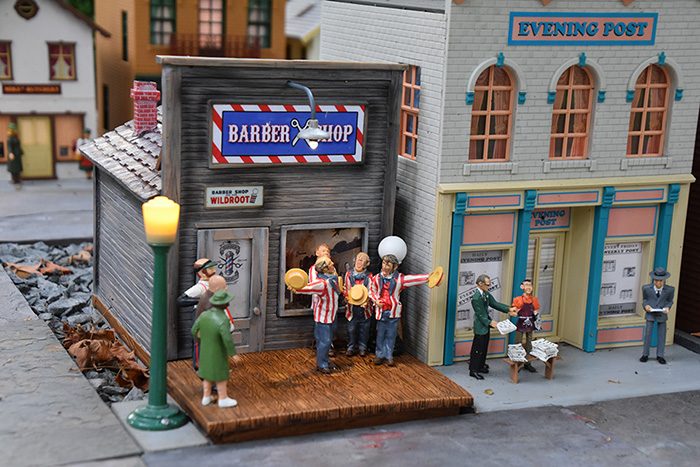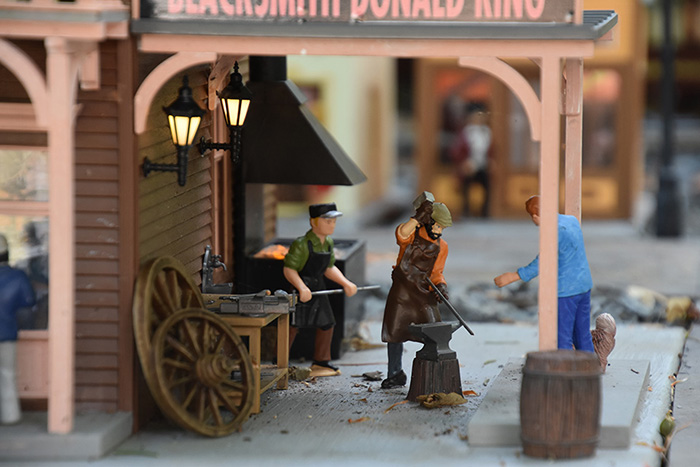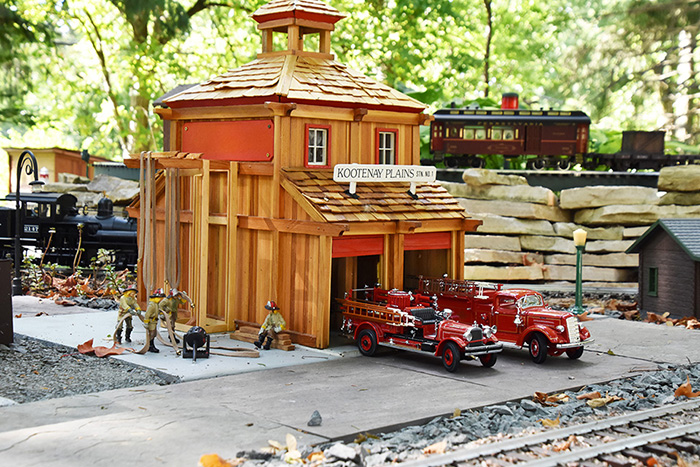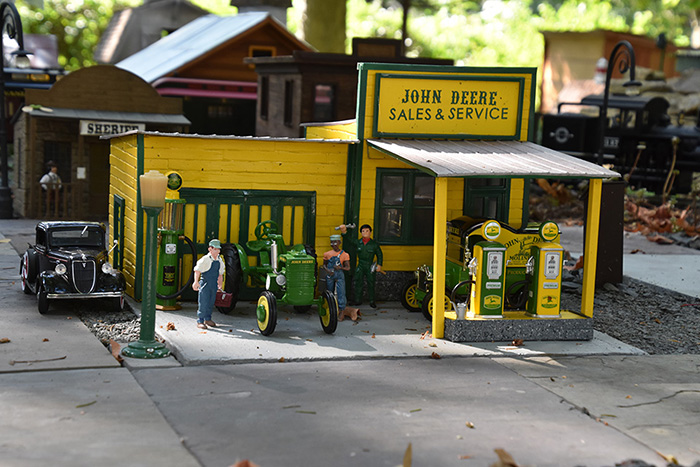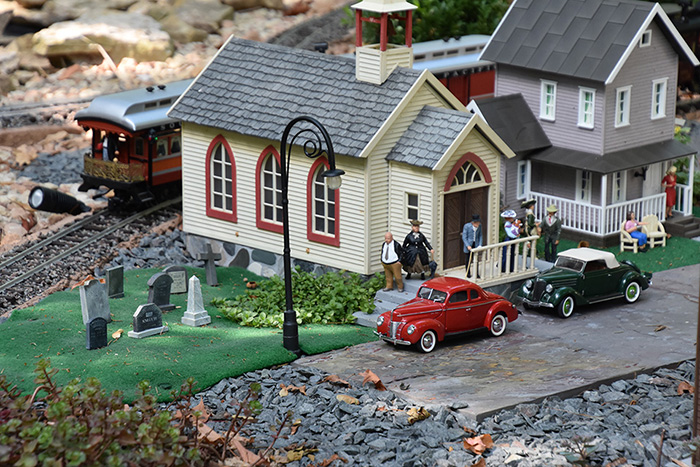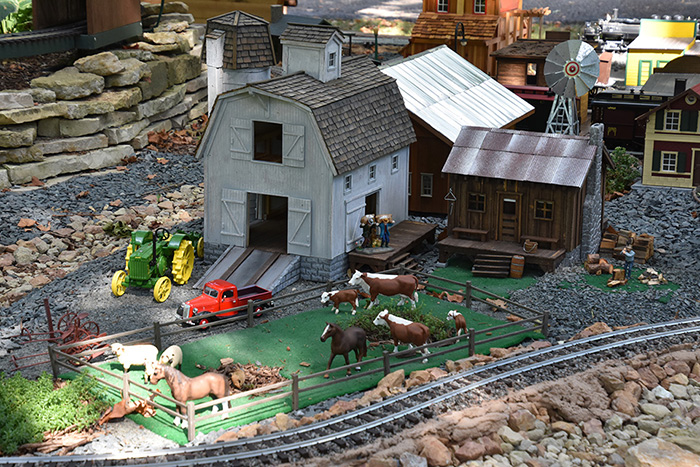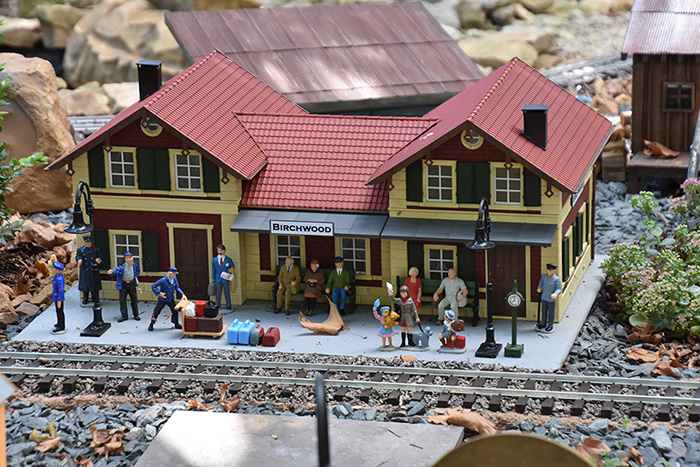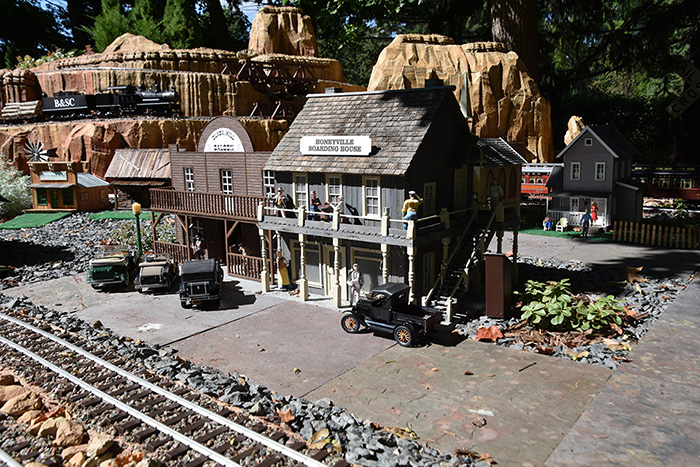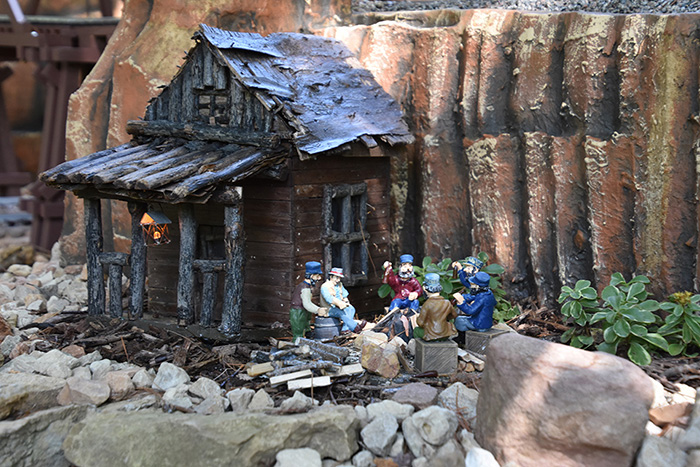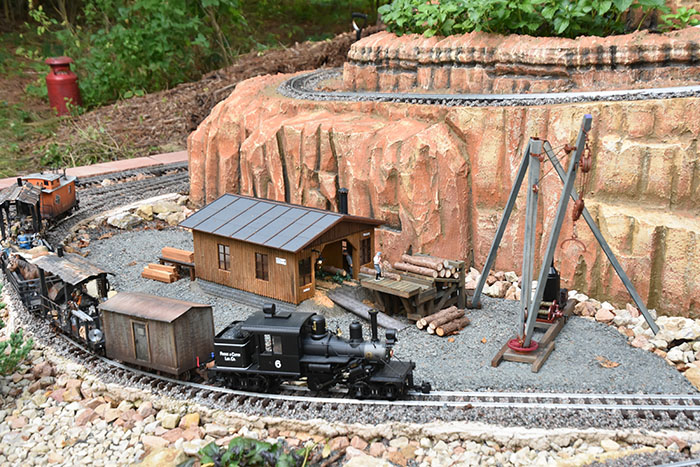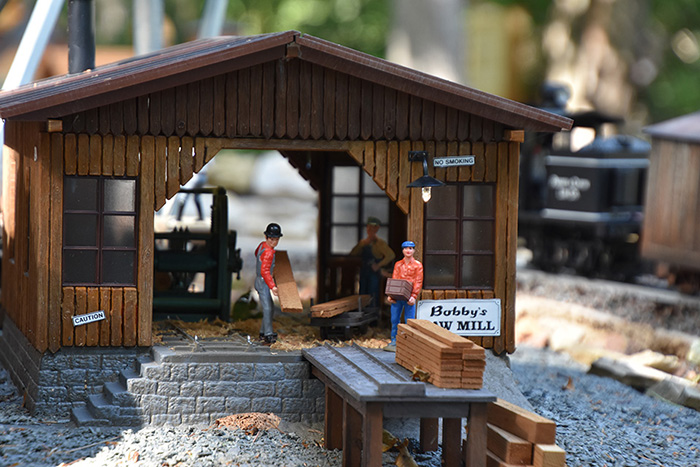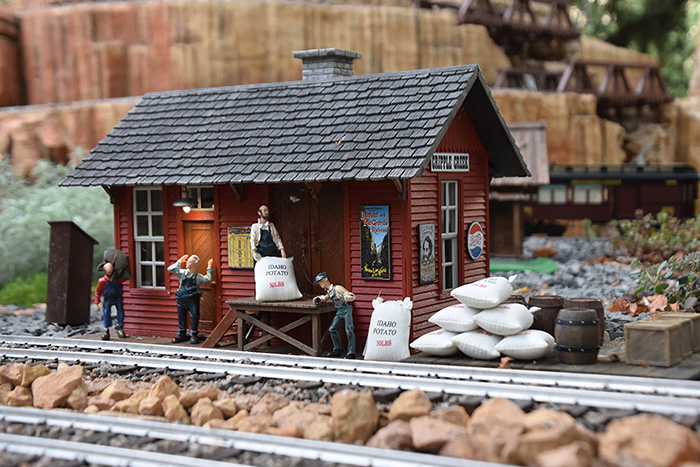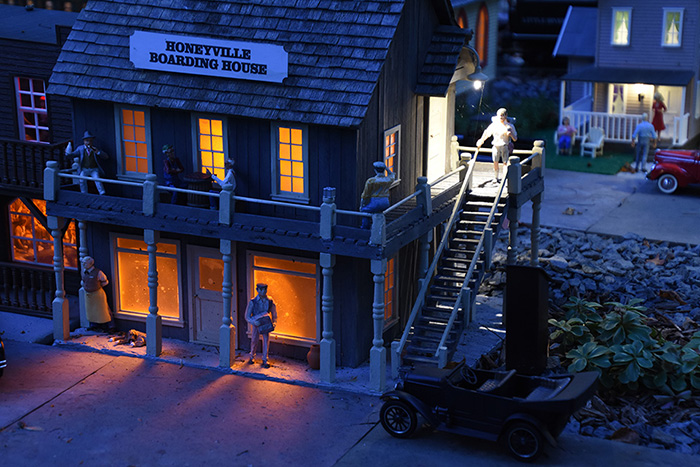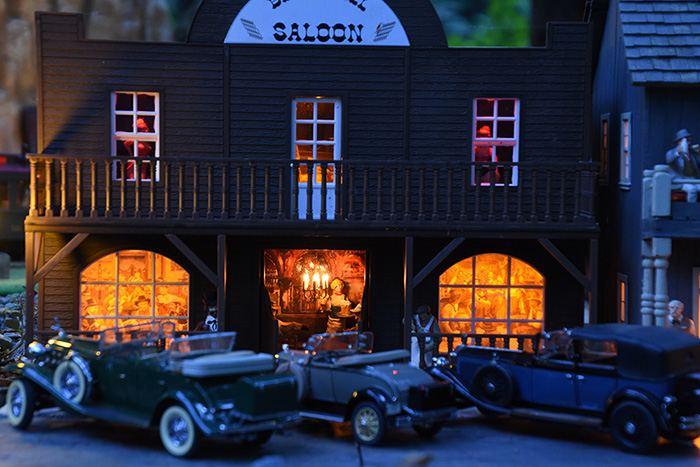
Diorama
Look up the term Diorama, and here's the definition you will find: The term Diorama refers to a three-dimensional model of a landscape, event, space, scene or room, often enclosed in a glass showcase for exhibition purposes. Dioramas are often built by hobbyists as part of related hobbies.
Well, there's no glass case in anybody's garden railroad layout. And most often, when model railroaders talk about adding diorama, they are really referring to adding detail, such as miniature characters and other items of interest. Technically the entire layout, including the trains, is a diorama. So when we talk about adding diorama to the layout, we are really talking about adding the detail that adds realism to the scene.
These buildings would be pretty dull without the miniature characters. I added the (working) light fixture to the barber shop so the barber shop quartet would be lit up at night. To be honest, I found the barber shop quartet first, and liked them so much I had to then find a barber shop for them.
No early 1900's rural village went without a blacksmith. Finding a blacksmith building wasn't so hard. Finding the blacksmith was a longer search. I added the (working) light fixtures to the side of the building. The blacksmith's forge also has a flickering orange light to simulate fire.
These diecast model fire trucks are a couple of my favorite models. The firemen came molded to certain actions happening in the minds of the sculptor. The poses are geared toward a fire fighting scene. I actually saw a layout with a half burned building and fire fighters posed as in action. There was even a smoke generator hidden inside the building. I wasn't ready to burn anything down just yet, I only wanted the fire station. I read in a blog that show laces make good scale fire hoses. True, but you have to shop around to find the right kind of laces before they look realistic.
You can find lots of things John Deere when it comes to modeling.
Yes you can buy scale model tomb stones, too.
Oddly enough, finding correctly scaled farm animals is not as easy as I thought it should be. I found these at Fleet Farm. And they were not cheap. The guy off to the right is chopping wood. He came with very fake looking wood to chop. I gave him some real wood, with correctly scaled split wood. You would think chopping tiny wood should be easy. It actually requires a little bit of care.
A train station needs a bunch of people to look like a train station.
The boarding house has a couple old guys playing checkers up on the deck, another guy is eating a sandwich, and so forth.
There were some hobo characters in a lot purchase I made on eBay. So I gave them a shack and a campfire and hid them on the other side of the mountain. Their fire lights up at night.
I scratch built a replica of a jib crane that would have been typical of a saw mill operation in the late 1800's or early 1900's. It would have used a steam powered winch to draw the cables. I found an assortment of correctly scaled pulleys and fittings and modified some of them to come up with the right combination of hardware.
I added characters and real lumber to the saw mill scene.
The freight station comes to life with the addition of these characters and a few sacks of potatoes. I added the miniature light fixture - wired with an LED for the bulb.
Characters add life to the boarding house all day, but lighting brings it to life at night.
And of course, there's always night life at the saloon. The miniature chandelier over the table inside actually works. The doors in the middle swing open, and the characters in the middle portion are 3-dimensional. The characters in the windows on the lower left and right are actually printed scenes laminated inside the windows. Upstairs there is a mix of 3-dimensional characters and printed scenes set in such a way they look rather real from the outside.

